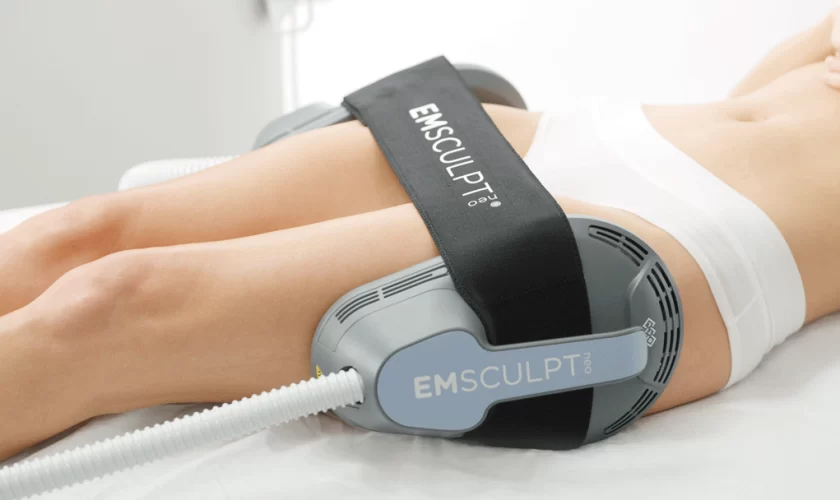Emsculpt NEO, a new and enhanced body shaping procedure, was launched by the developers of the original Emsculpt machine. Many individuals are asking, “What is Emsculpt NEO?” Downingtown Emsculpt NEO is a muscle-building treatment. It works by stimulating very strong muscular contractions with electromagnetic radiation. The contractions work the muscle at an incredible rate, causing it to expand and strengthen. The Emsculpt NEO treatment takes body shaping to a whole new level by including fat burning. Emsculpt NEO is the first and only FDA-approved therapy to build muscle AND burn fat using radiofrequency radiation.
How does Emsculpt NEO work
The radiofrequency generates heat, which raises muscle temperature by several degrees. The fat cells beneath the skin are permanently damaged and are naturally removed from the body. According to clinical studies, the treated locations have a 30% reduction in subcutaneous fat. While the radiofrequency energy removes fat from the targeted area, the high-intensity energy from the electromagnetic field contracts muscle fibers, bypassing the brain’s limitations. The energy causes intense contractions that are impossible to achieve during a typical workout. Clinical research shows that the treated area achieves a 25% increase in muscle volume and growth.
The aim of Emsculpt NEO
Emsculpt NEO alters your stomach by lowering belly fat and strengthening the core muscles beneath it. Treatments help you lose weight by strengthening your core muscles and slimming your waistline. It also sculpts the abs for that sought-after “six-pack-abs” look. Emsculpt NEO has the ability to:
- Build appealing, strong biceps and triceps.
- Create toned thighs and sculpted calf muscles and sculpt other primary leg muscles.
- Provide a non-surgical option to a butt lift by training the glutes and producing a moderate lifting effect.
Who is a perfect candidate for Emsculpt NEO?
Emsculpt Neo will help adults of all fitness levels and body types who desire greater definition in their calves, arms, abs, thighs, or buttocks. Ideal individuals have a BMI of 35 or less and are generally healthy and fit.
The difference between Emsculpt NEO and original Emsculpt
While both the Emsculpt NEO and the traditional Emsculpt are used for body contouring, the two devices are vastly different. First, Emsculpt NEO combines two technologies: radiofrequency (RF) and high intensity focused electromagnetic (HIFEM), resulting in a single therapy that combines two procedures. As a consequence, you get better outcomes in less time. Conversely, traditional Emsculpt exclusively employs HIFEM for muscle strengthening and toning.
Additionally, the initial Emsculpt patients have a BMI restriction of 30, with the ideal patient having a lower BMI and a generally fit physique. The Emsculpt NEO can treat adults with a BMI of up to 35 and is suitable for those who want to lose more fat while also training their muscles.
As with any body-sculpting treatment, exercise and a healthy diet are essential for maintaining and possibly improving your results. While Emsculpt NEO will not give you a complete transformation like plastic surgery, it will help you say farewell to those last few fat pockets that keep you from getting the flat stomach you have always wanted. Emsculpt NEO provides the finest trifecta compared to other body-sculpting therapies on the market: a reduced waiting time, faster results, and a lower price point.
However, you should still do your homework and consult with your doctor to ensure that Emsculpt NEO is the best option for your intended outcome. Call MELORA Health & Enhancement or schedule an appointment to learn more about Emsculpt NEO treatment.


